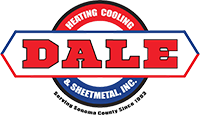A surprising statistic reported by the Environmental Protection Agency (EPA) states that the air quality inside your home is more polluted than the great outdoors.
Since there is no way that is a good thing, keep reading to learn how to test and improve the air quality in your home.
Factors that Affect Indoor Air Quality
Generally speaking, most of your time is spent indoors and if these indoor environments have poor air quality, it’s eventually going to affect your overall health.
The reason indoor air quality scores lower than the outdoors is because there are a lot of places for dust, dirt and allergens to settle. If the heat or air conditioning is turned on, these allergens are circulated throughout every room in your home. A good quality HEPA airfilter will reduce the number of allergnes by trapping them when HVAC is turned on.
If you open windows to let fresh air in, outdoor pollutants enter and settle inside.
In addition to common dust which contains a lot of allergens, there’s also pet dander, dead skin cells and mold spores in the air.
Other factors include emissions from your stove, clothes dryer and smoke from a fireplace, to name just a few.
How to Test Air Quality in Your Home
There are several tools you can use to measure the air quality in your home:
Indoor Air Quality Monitor
This makes testing and monitoring indoor quality a breeze since the device alerts you when there’s a potential issue.
These devices continuously test for indoor pollutants like dust, pollen, toxins and humidity levels.
Depending on the model, you can see the results on the monitor’s control panel or from a downloadable app. There are some devices that even tie in with your thermostat.
Carbon Monoxide (CO) Alarm
The dangerous thing about carbon monoxide is that it’s odorless, colorless, tasteless and can be deadly if you’ve been exposed to it for an extended amount of time.
Carbon monoxide is a byproduct released from anything fueled by gas. This includes gas dryers, stoves, water heaters and fireplaces.
While a CO detector shows levels of carbon monoxide in the home, it doesn’t necessarily alert you when danger arises, which is why you should consider an alarm.
Place alarms throughout your home, near the ceiling and with batteries changed each time you change your smoke alarm batteries.
Mold Testing
Active, growing mold in your home can cause extensive damage to your personal belongings, structural components of your home and to your mental and physical well-being.
One of the best tests for mold is noticing a musty smell in your home. Another obvious test is to see active, black mold growing in the crawlspace, basement, bathrooms, kitchen, around doors and windows or any humidity-prone areas.
Everyone has mold and subsequent airborne mold spores in their home. While there aren’t any guidelines in terms of acceptable levels, you need to take action if you see, smell or experience allergic or asthmatic reactions for unexplained reasons.
Commercial mold test kits available for purchase at local stores aren’t as accurate as your nose, eyes and physical symptoms.
To know if you have mold for sure, call in mold remediation professionals. Not only can they accurately test for active mold, but also take immediate action to get rid of and control a mold problem in your home.
Radon Testing
Another odorless, colorless, tasteless gas that affects air quality in the long term is radon.
While radon isn’t an immediate threat, the American Cancer Society reports that long-term exposure has been shown to cause lung cancer.
Radon is generated by nature’s process of breaking down uranium that is deposited in soil. During the breakdown process, gas is released and enters your home from the very bottom level and works its way up. Radon gas comes up through cracks in the foundation, walls, windows, floors, pipes and well water.
Radon testing kits are easily purchased on-line or at home improvement stores. These kits are easy to use by following manufacturer’s directions for sampling and testing.
There are also more permanent, battery-operated units that give you a continuous reading of radon gas levels in your home.
If the results indicate a high level of radon gas, the EPA has recommended solutions to lower radon gas levels in your home.
Everyday Indoor Air Quality Improvement Tips
- Change your furnace air filters to help trap dust, dirt and airborne allergens.
- Use a dehumidifier in moisture-prone areas, in addition to checking seals around windows and doors. Check under sinks for leaky pipes and in bathrooms and kitchens for dripping faucets. Check for leaks from the dishwasher, washing machine and fix seals around windows with visible condensation.
- Invest in an air purifier, whether as a part of your HVAC system and/or individual units placed around your home.
Benefits of Improved Air Quality
Once you clear the air, so to speak, you should notice an improvement in both physical and cognitive health.
Here are some of the benefits you may experience with improved air quality:
- Less upper respiratory irritation, asthma and allergy triggers and attacks
- Better focus and concentration
- More restful sleep
- Less frequent or complete cure from nausea, headaches
- Less frequent bouts of sneezing, coughing
- Easier breathing
- Less irritation of the eyes, nasal passages and throat
Conclusion
Anyone can experience the negative effects of poor air quality. Those at higher risk for health issues include the elderly, the very young and anyone who suffers from heart or lung conditions.
For testing, recommendations and effective solutions to start enjoying better air quality, reach out to the experts at Dale HCS in Santa Rosa today.

